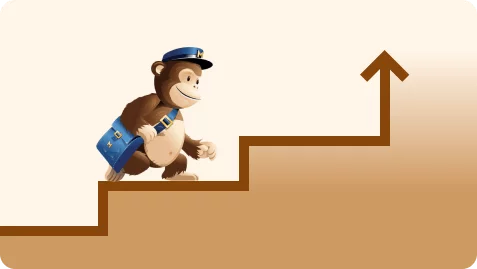
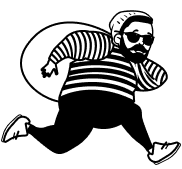
Looking to make your product a hit in the market? That’s what we’re all after.
For Notion, the community and word-of-mouth took it beyond $10 Billion.
But, I was curious as to what made Mailchimp go from 👇
Just a ‘Side Hustle’ to → ‘$800 Million in Revenue’?
Join me as I uncover their insider secrets in this 3-part article:
Part 1 – Mailchimp’s Masterstroke in Branding (Read below)
Part 2 – Growth Strategies: Not by the books
Part 3 – Mailchimp Traffic & SEO Playbook
Back in 2000, who would have thought of Chimp being an iconic face of a brand?
Today it’s synonymous with email marketing, right? Why so?
Because they came up with their own innovative branding tactics:
Mailchimp pioneered in using fun elements in an industry typically seen as serious.
From their mascot to social media and ads, every touchpoint with the brand feels like a conversation with a friend, not a corporate entity.


Mailchimp has been adopting this tactic right from the start. They reach out where their audience dwells and get noticed remarkably with the help of 3 channels:
1. Event-based Marketing
They quickly realized that their target audience hangs out at events, art shows, fundraisers, etc. So, they started sponsoring such events. No kidding, they even went on to commission a Rock Opera.
And the best part – they promote themselves without being annoying. Instead of showing lots of ads, they just let everyone know they sponsored the event.
Subtle branding, no jibba jabba!
This helped Mailchimp get recognized, & the buzz never ended 👇
2. Location-based Marketing
With time, Mailchimp targeted cities with more users and placed their billboards in such areas. To top it with fun and make it more relatable, the billboards had nothing but a smiling Freddie.
After all, you don’t see a smiling monkey hanging out on a billboard every day! And this striking element makes Mailchimp stay with you.
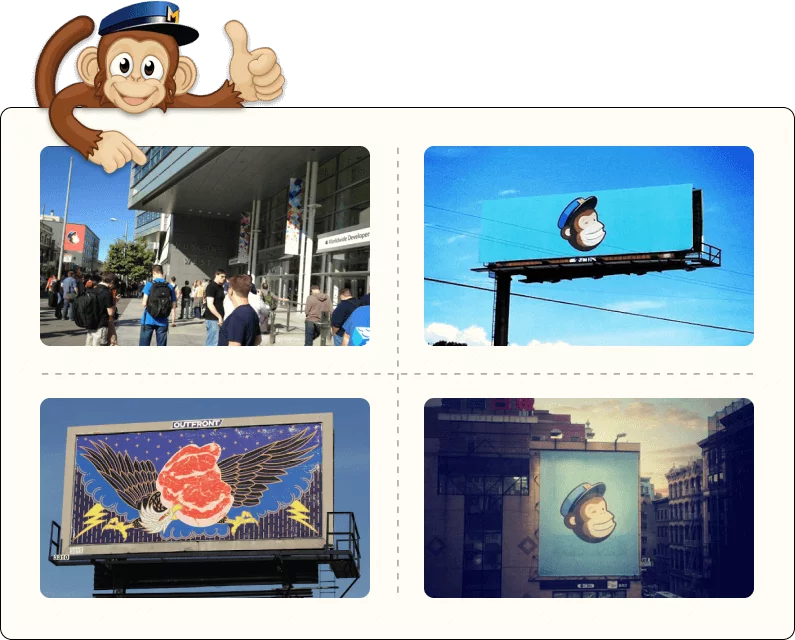
The billboard campaign was a success. 🎉 But how did they measure its results? Well, they tracked how many people posted Freddie’s photos on social media. Mostly, people were happy to see the smiling Freddie, like this Twitter user 👇
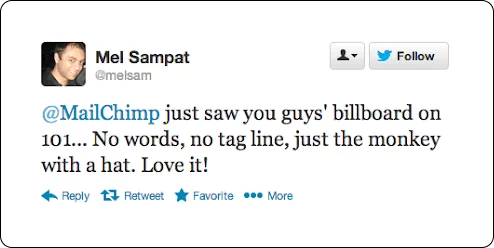
3 . Podcast-based Marketing
After events and billboards, podcast was the most popular channel tapped by Mailchimp. It inspired them to sponsor the famous podcasts: `This American Life` and `Serial`.
Particularly, the Serial sponsorship paid off:
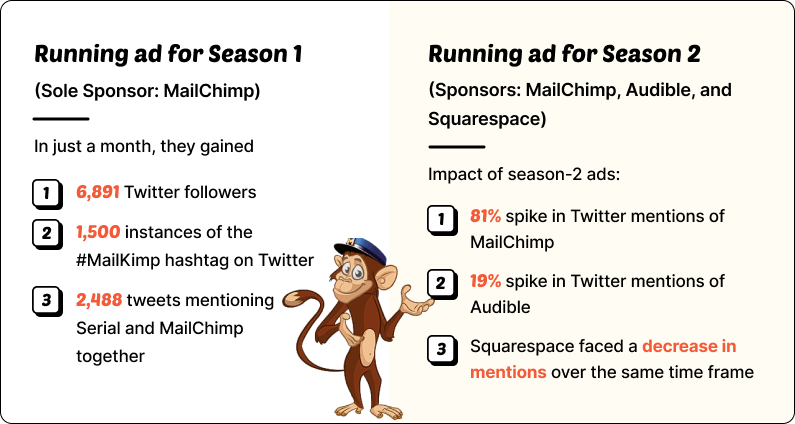
Just 1 year had passed and people were already missing Mailchimp’s ad. That’s how memorable it was!


The ad’s impact was immediate and widespread. 36 Million people were curious to know what Mailkimp is.
And, Mailchimp cleverly capitalized on this curiosity. They quickly launched a ‘MailKimp’ website, smartly redirecting its traffic to their main site.
But that’s not all. They then went on to launch the quirkiest campaign ever that reached 334+ Million people!!!
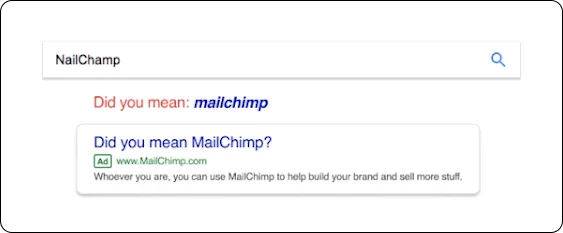
One of the finest examples of curiosity-driven marketing-‘Did you mean Mailchimp?’ campaign.
🎭 Nine Fake Brands: They came up with 9 made-up brands having names similar to Mailchimp – ‘MailShrimp’, ‘KaleLimp’, and ‘SnailPrimp’ – pretty funny, right?
😉 Real Stuff for Fake Brands: These weren’t just names. Mailchimp created short films, websites, music videos, billboards, subway ads, and even real products to promote these fake brands.
🔍 Got People Googling: This strange campaign caught people’s attention. They started searching online to find out more about these fake brands.
✉️ Did You Mean Mailchimp: As curiosity peaked, Google helped along. Anyone searching these odd brand names was gently nudged with the question, `Did you mean Mailchimp?` 👇
Now, let’s talk numbers.

The ad’s impact was immediate and widespread. 36 Million people were curious to know what Mailkimp is.
And, Mailchimp cleverly capitalized on this curiosity. They quickly launched a ‘MailKimp’ website, smartly redirecting its traffic to their main site.
But that’s not all. They then went on to launch the quirkiest campaign ever that reached 334+ Million people!!!

One of the finest examples of curiosity-driven marketing-‘Did you mean Mailchimp?’ campaign.
🎭 Nine Fake Brands: They came up with 9 made-up brands having names similar to Mailchimp – ‘MailShrimp’, ‘KaleLimp’, and ‘SnailPrimp’ – pretty funny, right?
😉 Real Stuff for Fake Brands: These weren’t just names. Mailchimp created short films, websites, music videos, billboards, subway ads, and even real products to promote these fake brands.
🔍 Got People Googling: This strange campaign caught people’s attention. They started searching online to find out more about these fake brands.
✉️ Did You Mean Mailchimp: As curiosity peaked, Google helped along. Anyone searching these odd brand names was gently nudged with the question, `Did you mean Mailchimp?` 👇
Now, let’s talk numbers.


Marketing was surely Mailchimp’s forte, but it wasn’t the only one.
They hacked their way to 3 new growth frameworks:
Subscribe & get notified when Part 2 goes LIVE!
No spam. Promise. See privacy policy.
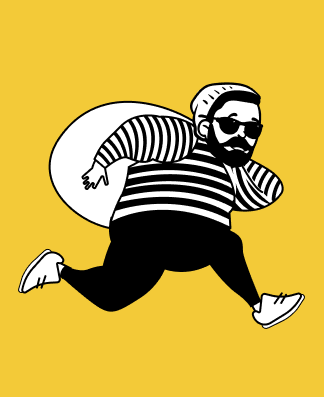
Free biweekly newsletter.
No spam. Promise. See privacy policy.